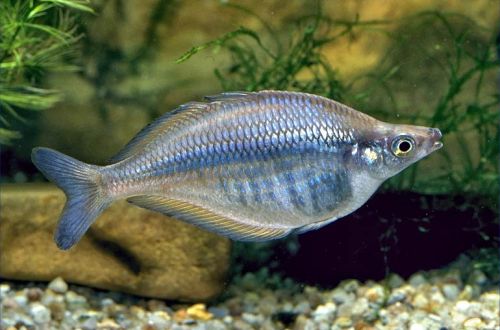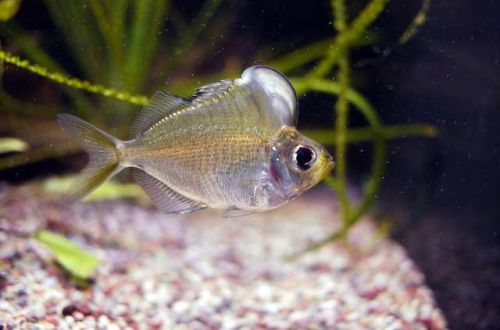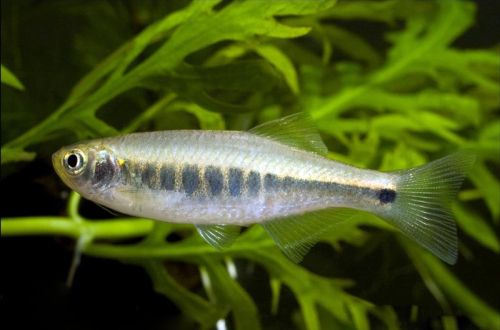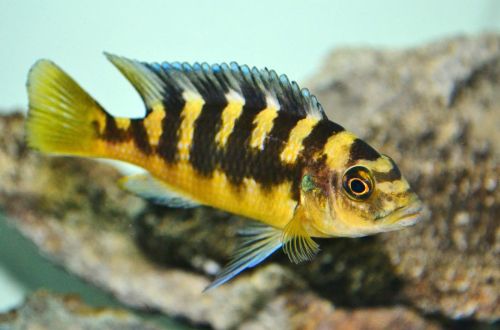
iris fasciata
Rainbow fasciata, scientific name Chilatherina fasciata, belongs to the Melanotaeniidae family. Bright active fish with changeable coloring. Representatives of the same species can have significant differences in color. Peaceful, easy to keep and breed. Will be a good choice for the freshwater aquarium community.

Contents
Habitat
Comes from the island of New Guinea. Inhabits the basin of the Mamberamo River, one of the largest in the region. Inhabit shallow streams and rivers, prefer areas well lit by the sun. A typical biotope is a reservoir with stony substrates covered with fallen leaves, snags and other plant organic matter.
Brief information:
- The volume of the aquarium – from 150 liters.
- Temperature – 22-33°C
- Value pH — 6.8–8.0
- Water hardness – 8–15 dGH
- Substrate type – any
- Lighting – subdued
- Brackish water – no
- Water movement – light or moderate
- The size of the fish is 10–12 cm.
- Food – any food
- Temperament – peaceful
- Keeping in a group of 6-8 individuals
Description
Like most other iris, the fasciata iris shows great variation in body color and pattern depending on the specific region of origin. In New Guinea, there are many natural barriers that isolate different populations, thus contributing to the emergence of different color variations.
In most cases, the base color of the body varies from brownish to blue on the top and silver to gold on the underside. Vertical dark strokes are visible on the abdomen.
Males are more colorful than females and tend to have reddish or yellowish dorsal and anal fins. And during spawning, the upper part of the head can acquire a bronze hue.
It is sometimes confused with a similar closely related species, Bleher’s Rainbow. In addition, hybrid varieties from both species are on sale.
Food
The diet in nature includes filamentous algae, small crustaceans, terrestrial insects (especially ants and tiny beetles) and aquatic insect larvae. Such omnivorousness allows you to use most popular foods in dry, frozen and live form in home aquariums.
Maintenance and care, arrangement of aquariums
Successful long-term maintenance is possible in conditions that are close to the natural habitat. Rainbow fasciata needs warm, slightly alkaline water, spaces for swimming, and places for shelter in the form of thickets of plants or other decorations. They can jump out of the aquarium to prevent this, floating plants are placed on the surface of the water and / or the aquarium is equipped with a lid.
To maintain biological balance, it will be necessary to replace part of the water with fresh weekly, which is recommended to be combined with cleaning the soil with a siphon from organic waste (food residue, excrement). An important role in ensuring high water quality is given to the smooth operation of the filtration system.
Behavior and Compatibility
An active peaceful fish, however their high mobility may not be suitable for some slow/shy species. Males are not too tolerant of each other, so it is worth buying a group with a predominance of females in a small tank.
Breeding / breeding
In suitable conditions for themselves, the Rainbow fasciata are able to produce offspring throughout the year. In aquariums, seasonality is not expressed. Sexual maturity occurs when the fish reach 4-5 cm. They spawn among thickets of plants, and at a time the female lays only a small part of the eggs, so the spawning time is extended to 7 days. The incubation period lasts 8-12 days depending on the temperature. It is advisable to transplant the fry into a separate tank. In a spawning aquarium, it will be easier to feed the juveniles and there is no threat of predation from adult fish.
Fish diseases
In a favorable environment, cases of the disease are rare. When the first symptoms of the disease appear (lethargy, deformation of the body, the appearance of spots, etc.), it is first necessary to check the quality of the water. Probably, bringing all indicators of the habitat back to normal will allow the body of the fish to cope with the disease on its own. Otherwise, medical treatment will be required. Read more in the section “Diseases of aquarium fish”.





